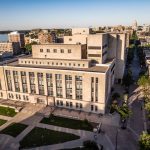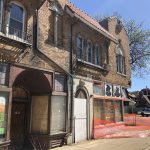Milwaukee County Receives Initial Federal Approval for Bus Rapid Transit
This approval allows the County and MCTS to begin environmental and engineering studies on the route.
MILWAUKEE – Milwaukee County Executive Chris Abele today announced that the County has received approval from the U.S. Department of Transportation to enter into the Project Development (PD) phase of the East-West Bus Rapid Transit Project, a critical next step in the process to modernize our transit system and drive economic activity in all corners of the County.
This key approval allows Milwaukee County and the Milwaukee County Transit System to begin environmental and engineering studies on the 9-mile BRT route. Further, by entering into the PD phase, any money spent on the studies can be applied as the local match of the project cost.
“This approval is more great news for Milwaukee County,” said County Executive Chris Abele. “When I announced that we would pursue this project we made it clear the goal was to create a fast, modern and affordable way to connect people to jobs, school and economic opportunities. As we move into this next phase we will continue to work with the community, riders and our partners on the Milwaukee County Board and Milwaukee and Wauwatosa Common Councils to make this plan a reality.”
The county executive’s upcoming budget, due October 1st, is expected to include funding to continue planning for the Bus Rapid Transit project as part of a broader commitment to ensuring a sustainable transit system for years to come. As the Public Policy Forum recently observed, Milwaukee County is at a fork in the road when it comes to transportation and infrastructure. In order to preserve the progress we’ve made and have the ability to make smart investments with an eye towards the future, like Bus Rapid Transit, we must also take steps to ensure the overall sustainability of our transit system with dedicated funding, like the vehicle registration fee.
An analysis shows that in less than 20 years the BRT project will attract thousands of new riders every day and cut bus travel times on the route. The study team found the proposed BRT service would benefit drivers by taking more than 6,100 cars off the road and reduce the amount of miles people drive by up to 17 million miles a year. Fewer cars mean less congestion on local roads, and cleaner air for everyone.
In late August, Milwaukee County submitted an application to the Federal Transit Administration (FTA) for grant funding for the BRT project. The FTA is expected to announce funding recipients in 2017.
NOTE: This press release was submitted to Urban Milwaukee and was not written by an Urban Milwaukee writer. While it is believed to be reliable, Urban Milwaukee does not guarantee its accuracy or completeness.
Mentioned in This Press Release
Recent Press Releases by County Executive Chris Abele
Milwaukee County Passes Ordinance to Advance Racial Equity and Improve Health Outcomes
Apr 29th, 2020 by County Executive Chris AbeleMilwaukee County leaders commit to eliminating institutional racism by addressing County polices, practices and power structures through a racial equity lens
Milwaukee County Officials Order All Municipal Polling Places Closed
Apr 6th, 2020 by County Executive Chris AbeleCounty Officials Implement Gov's Order to Protect Public Health
























Why is this not a good option for local Milwaukee residents?
Why do we need dedicated tracks locally? I feel like the answer that it’s permanent is weak?
I support improved public transit options for Milwaukee but the proposed bus rapid transit system is not needed, is not wanted, and is a massive waste of federal and county money. The consultants have misled the public with gross exaggerations of the increased ridership, the decreased time it will take to get from downtown to the Milwaukee medical complex, and the decreased auto traffic that will result from the BRT. If the BRT consultants had ridden the current buses from downtown to the medical complex, they would have found that for most of the day the current buses are not even half full. Reducing the time it takes to get to the medical complex or downtown by a few minutes will not increase ridership. In fact, it could reduce ridership within the city of Milwaukee because with the proposed fewer stops for the BRT the current riders will have to walk further to catch the BRT and may then choose to drive a car instead. The MCTS made a good decision when the Gold Line was developed; bus rapid transit as proposed is not a good idea.
Reducing lanes for auto traffic on Wisconsin Avenue and Bluemound Road will also likely increase congestion and accidents on both of those main arteries, increase auto travel time, and in turn increase auto traffic diverting through additional residential neighborhoods.
It is my understanding from everything I have read that the Milwaukee Country Transit System is not in good financial health. Therefore, it should be looking for innovative options that are more cost effective. Improvements to current buses and routes could do much more to increase public transit ridership than the BRT ever will and could do so at much less expense.